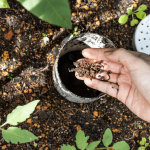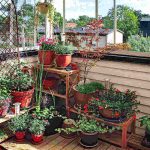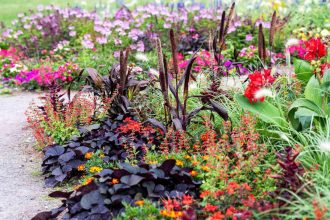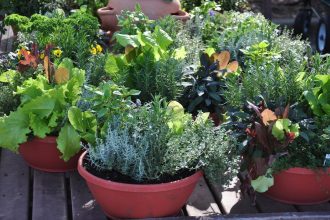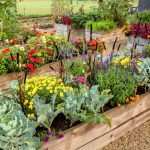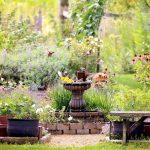Lush greenery, vibrant blooms, and serene outdoor spaces – the art of landscape design transforms a mere backyard into a sanctuary of beauty and tranquility. When it comes to creating a stunning home garden, understanding the principles of landscape design is essential. From incorporating balance and unity to harnessing the power of color and texture, these fundamental principles serve as the blueprint for creating a harmonious and visually striking outdoor oasis. Join us as we delve into the world of landscape design and discover how you can elevate your home garden to new heights of splendor.

Key Elements of Landscape Design
In landscape design for home gardens, there are several key elements that need to be considered to create a harmonious and visually appealing outdoor space. One important element is balance, which involves arranging elements in a way that creates a sense of equality and stability in the design. This can be achieved through symmetrical or asymmetrical arrangements of plants, hardscape features, and other elements.
Another essential element is unity, which refers to the cohesive and interconnected nature of the design. By incorporating elements such as color schemes, textures, and themes that tie the different parts of the garden together, a sense of unity can be achieved. Proportion is also crucial in landscape design, as it involves the relative size and scale of elements in relation to each other and to the overall space. Creating a sense of proportion helps to maintain a visually pleasing balance in the garden.
Rhythm is another key element of landscape design that adds interest and movement to the space. By repeating certain shapes, colors, or patterns throughout the garden, a sense of rhythm can be established. Hierarchy is important for creating focal points and directing the viewer’s attention to specific areas of the garden. By using elements such as pathways, focal plants, or decorative features, a sense of hierarchy can be established to guide the viewer’s gaze.
Understanding Scale and Proportion in Garden Design
In garden design, scale and proportion play a crucial role in creating a harmonious and visually appealing outdoor space. Understanding how elements within your garden relate to each other in terms of size and proportion can help you achieve a balanced and cohesive design. Here are some key principles to keep in mind when planning your home garden:
Scale:
- Scale refers to the size of various elements within your garden in relation to each other and the surrounding space.
- Choose plants, trees, and features that are proportionate to the size of your garden and the scale of your home.
- Consider how different elements will interact with each other and the overall landscape to create a sense of unity.
Proportion:
- Proportion is about the relationship between different elements in terms of their size, shape, and placement.
- Ensure that pathways, seating areas, and garden structures are proportionate to the overall size of your garden.
- Use repetition and rhythm to create a sense of harmony and balance throughout your garden design.
Remember, achieving the right scale and proportion in your garden design is a dynamic process that may require experimentation and adjustments. By paying attention to these fundamental principles, you can create a beautiful and inviting outdoor space that is both functional and aesthetically pleasing.
Creativity in Plant Selection and Arrangement
When it comes to designing your home garden, the possibilities are endless. One key aspect of creating a visually pleasing landscape is utilizing . By carefully choosing the right plants and positioning them strategically, you can transform your outdoor space into a beautiful and harmonious sanctuary.
One principle to keep in mind when selecting plants is to consider their varying heights, colors, textures, and bloom times. This diversity will add visual interest and create a dynamic and engaging garden. Mix and match different types of plants to create contrast and balance in your landscape.
Another way to showcase your creativity is through the arrangement of plants. Experiment with different patterns and groupings to create a unique and personalized garden design. Consider using focal points such as trees or shrubs to anchor your garden and draw the eye to specific areas.
Importance of Sustainable Practices in Home Garden Landscaping
Creating a sustainable home garden is not just about maintaining a beautiful outdoor space; it’s also about preserving the environment and supporting biodiversity. By incorporating eco-friendly practices into your landscaping, you can help reduce your carbon footprint and promote a healthy ecosystem in your backyard.
One of the key principles of sustainable landscape design is water conservation. By using native plants that are adapted to your region’s climate and soil conditions, you can minimize the need for irrigation and reduce water waste. Additionally, incorporating rainwater harvesting systems and drip irrigation can help further conserve water resources.
- Choose native plants: Selecting plants that are native to your area can help reduce water usage and maintenance needs. Native plants are better adapted to the local climate and require less water and fertilizer.
- Compost and mulch: Utilizing compost and mulch in your garden beds can help improve soil health, retain moisture, and reduce the need for chemical fertilizers.
| Plant | Water Needs |
|---|---|
| Lavender | Low |
| Succulents | Low |
- Practice integrated pest management: Instead of relying on chemical pesticides, consider using natural predators, trap crops, and beneficial insects to control pest populations in your garden.
- Create wildlife habitats: Encourage biodiversity by incorporating bird feeders, bee houses, and butterfly gardens into your landscaping. By providing food and shelter for wildlife, you can help support local ecosystems.
In conclusion, incorporating the principles of landscape design can truly transform your home garden into a tranquil oasis that not only enhances the beauty of your surroundings but also provides a peaceful sanctuary for relaxation and reflection. By understanding and applying these principles, you can create a harmonious balance between nature and architecture, and ultimately, cultivate a space that brings joy to both your eyes and your soul. So, go ahead and unleash your creativity, experiment with different elements, and watch as your garden flourishes into a masterpiece that reflects your unique personality and style. Happy gardening!


